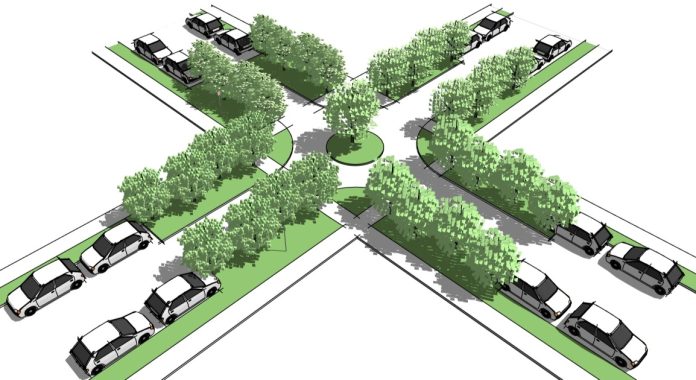Seattle’s goal is 30% tree canopy by 2037. By converting a quarter of on-street parking into tree hubs, we can add thousands of trees and hit the target.
Right now, many tree activists are throwing shade on Seattle’s Comprehensive Plan, accusing it of “paving over Seattle” and cutting down trees for homes. As it turns out, Seattle is already pretty well paved over after dedicating a third of our city to pavement designed to move and store cars.
Rather than blocking new housing in the name of preserving trees, however, Seattle would be better served to meet its tree canopy goals by leveraging the land it owns, which is dominated by roads and on-street parking. By converting 120,000 of the city’s more than 500,000 on-street parking spaces, Seattle could meet its 30% tree canopy goal and distribute new trees equitably across the city. Today, Seattle’s wealthier neighborhoods have much more tree cover than poorer, more diverse areas.
It’s not as far-fetched as it sounds. Paris has taken on a similar pledge, promising to replace 60,000 parking spots with street trees by 2030. Paris spans just 41 square miles, so the equivalent goal in 84-square-mile Seattle would be double.
It’s also not the first time this has been put forward in Seattle. In 2018, Rob Harrison’s architecture firm proposed the same intersection trees concept, which unfortunately hasn’t been put into action at scale.
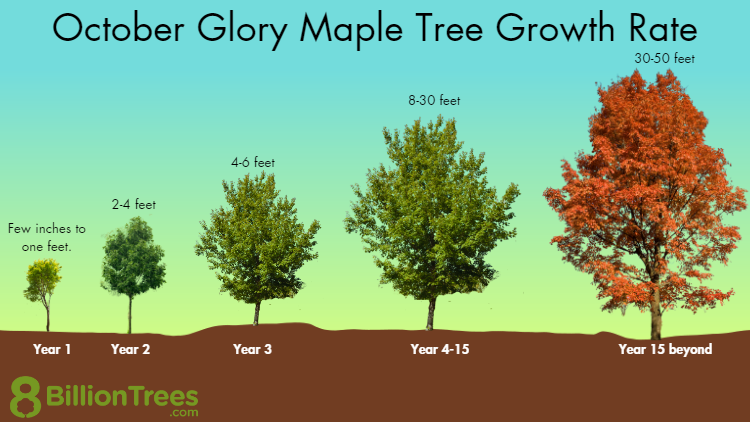
Seattle’s single-family neighborhoods, the very neighborhoods tree activists are trying to protect, were carved out of virgin forests more than a century ago. Today’s single-family neighborhoods are responsible for 89 acres of lost tree canopy between 2012 and 2021, the most of any zone outside of parks and open space.
The 2021 Tree Canopy Assessment report outlined the breakdown of our 255 acres of lost tree canopy. 46% of canopy loss was in parks, another 35% in single-family zones (where almost no net housing growth occurred) and less than 10% has come at the hands of multifamily development.
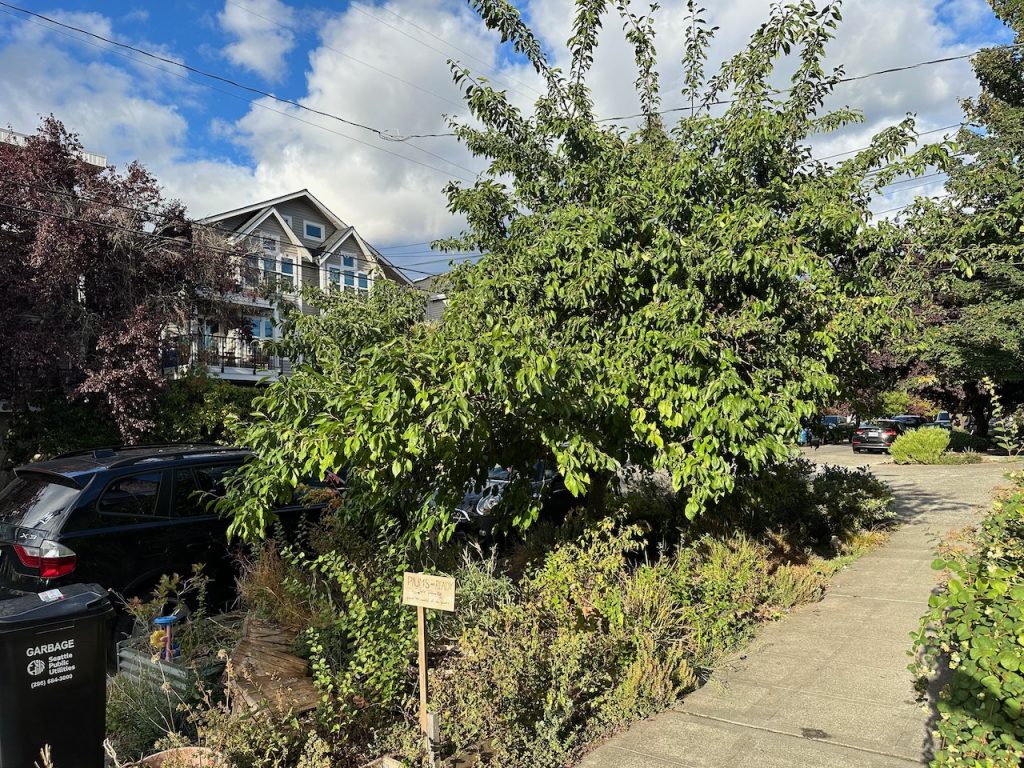
While ideas around solutions vary, a broad consensus in favor of expanding tree cover exists across urbanists, climate activists, housing advocates, and neighborhood groups. An alliance can be born with a solution that serves us all, adding both tons of housing and trees.
‘Paving to Planting’ would add 1,000 acres of tree canopy
Seattle is currently about one-third pavement — more than 15,000 acres of asphalt and concrete. These are the streets that you and I own, and the City manages. Despite a population of 800,000 people, Seattle has only 460,000 cars registered. Counting off-street parking structures and lots, Seattle can park more than 1.6 million vehicles at any given time, aided by its 500,000 on-street parking spaces. We have an overwhelming surplus of parking and pavement, so why not use some of that space to plant some trees?
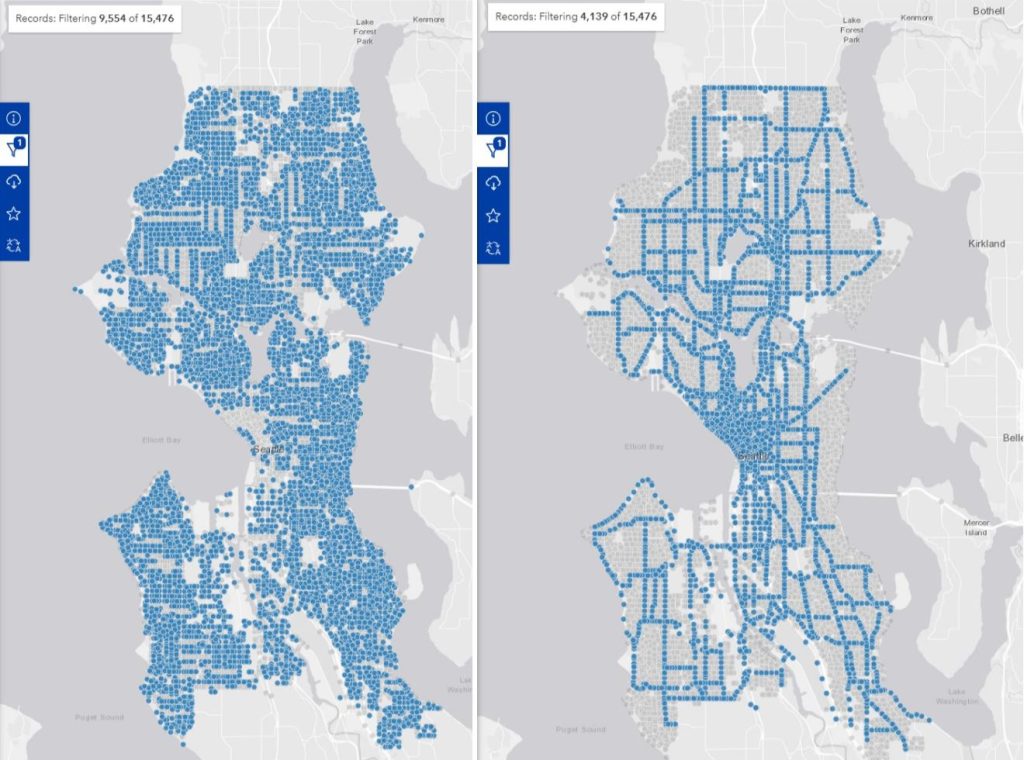
The Paving to Planting plan should be integral to Seattle tree canopy strategy, in addition to the tree ordinance Seattle passed in 2023. This city’s 2021 tree assessment found the canopy had shrunk to 28.1% rather than growing toward the 30% goal. While the ordinance protects existing trees and encourages planting, it doesn’t guarantee Seattle will meet its canopy goal by 2037 since it relies on the private landowners to deliver. Buried in the back of the report, it offered solutions, including planting trees in the right-of-way as a method to grow the city’s canopy.
Seattle owns more than 15,000 intersections citywide, and 9,600 of them are on quiet, low-traffic streets inside our grid of neighborhoods. If we convert eight parking spaces into trees, build planted curb bulbs and roundabouts with trees, then each intersection can become 17 new trees. Doing this citywide adds nearly 165,000 trees. With a typical 16-foot diameter canopy, this would add approximately 750 acres of tree canopy in the short time it takes for these trees to mature.
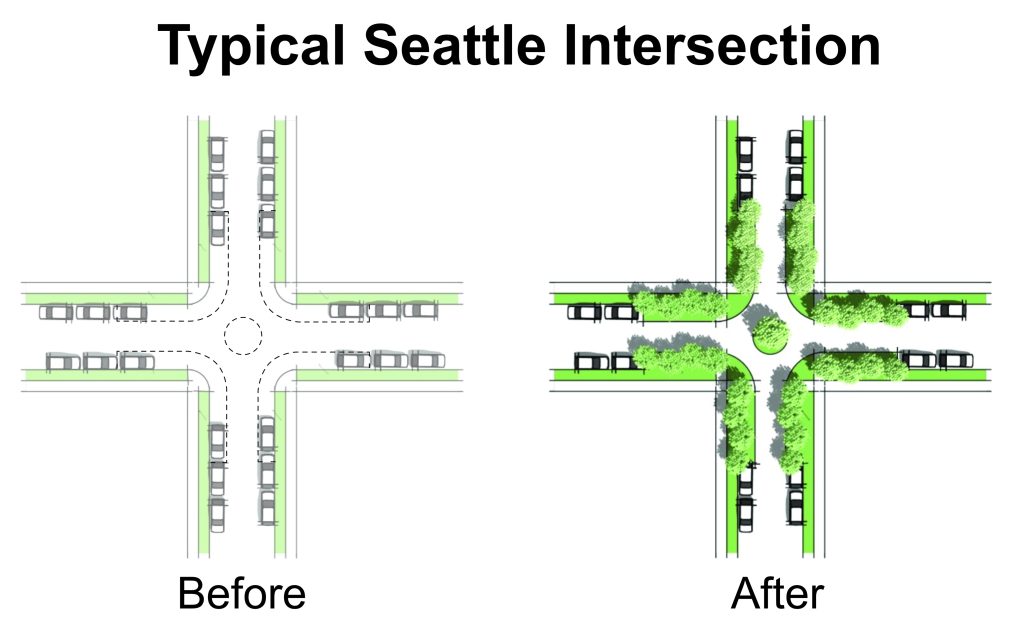
Along arterials, we could convert intersections and trade eight parking spots for 16 new trees. With 4,200 arterial intersections, this adds another 67,000 trees and another 300 acres of tree canopy coverage. Tree species vary, and canopies can range from medium to large. The average October Glory maple will reach this canopy diameter in less than a decade. With a variety of trees to choose from, and canopies growing larger than this study provides, the canopy coverage has an opportunity to prosper even further.
By adding over 1,000 acres of tree canopy coverage Seattle would achieve 30.1% coverage with these changes alone.
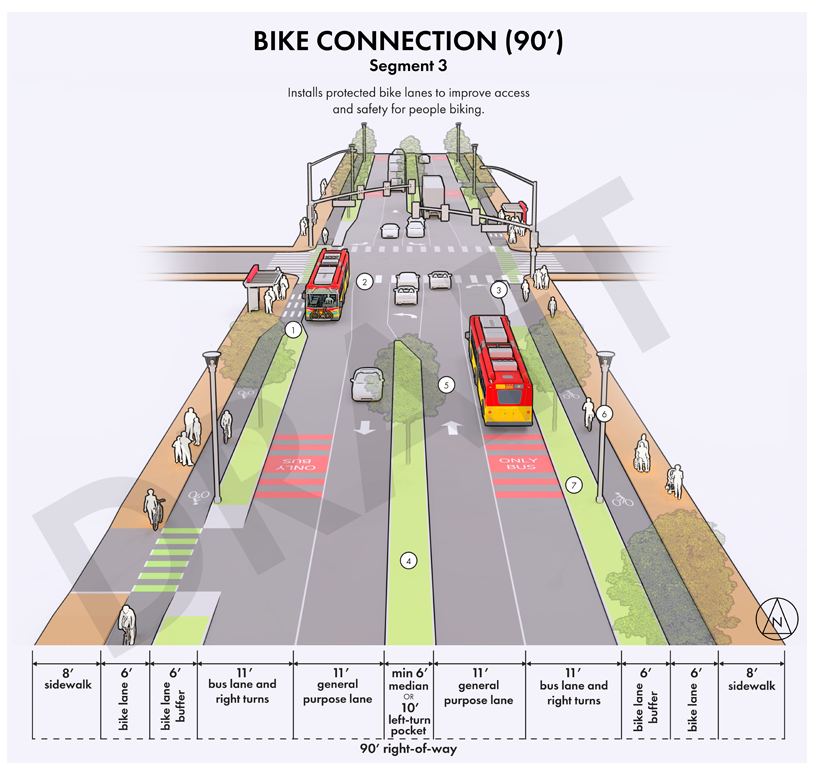
Streets like Aurora Avenue are getting proposals to improve safety and livability. If we plant street trees along with sidewalk improvements and the protected bicycle network we desperately need, we could add another 100 acres of tree canopy coverage across 20 miles of road. The trees would be pleasant additions to our loud, busy streets — places Mayor Bruce Harrell’s One Seattle growth plan is targeting for housing. These trees would also offer safety for bicyclists and pedestrians, creating nice buffers between people and cars.
‘Paving to Planting’ is real climate policy
Pitting density versus trees is bad climate policy. According to the United Nations’ Intergovernmental Panel on Climate Change, “the growing concentration of people and activities is an opportunity to increase resource efficiency and decarbonize at scale.” What the report concludes is that car dependency is a problem for the climate and density is the solution. Knowing this, it’s no surprise Seattle’s top source of emissions is currently personal vehicles, which contribute 52% of our emissions according to Seattle’s Department of Sustainability and Environment. Perhaps it’s time to pay attention to the elephant in the room and do something about it.
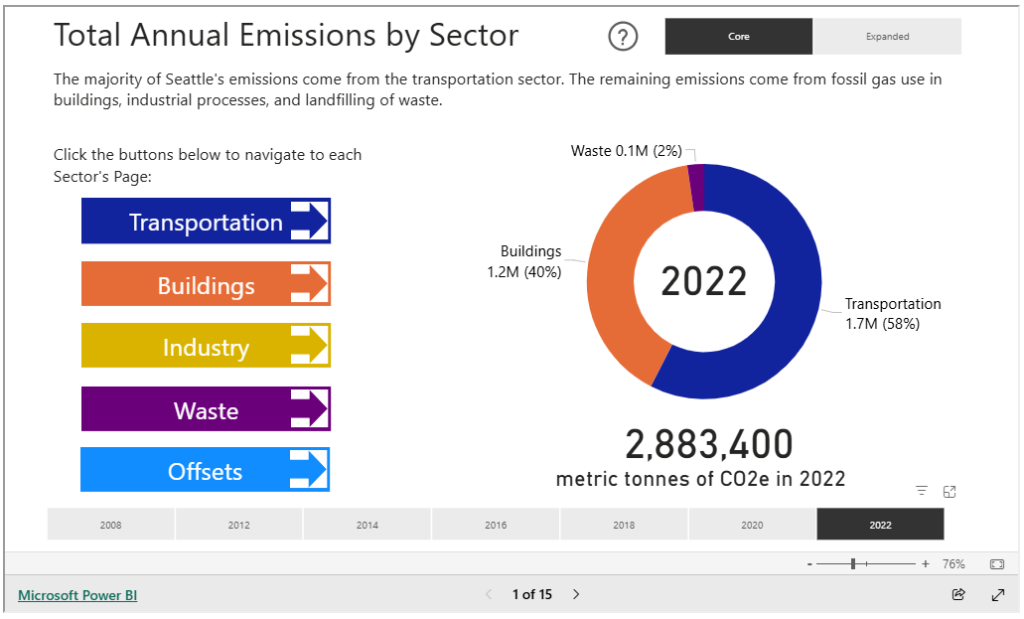
Paving to Planting would solve three issues with one policy:
- Adding trees;
- Reducing heat island effects; and
- Curbing stormwater runoff.
Converting 120,000 of the City’s half-million on-street parking spaces to reach Seattle’s threshold for 30% canopy coverage is smart climate policy. Trading pavement for trees cover lessens the urban heat island effect and absorbs stormwater runoff that flushes toxic tire particles into Puget Sound, jeopardizing salmon runs and imperiling resident orca whale populations. Pavement is among the worst offenders in trapping urban heat and generating toxic runoff.
In contrast, replacing pavement with trees would absorb stormwater runoff rather than generating it, turning Seattle into a “sponge city.” This has the added benefit of decreasing the need for costly sewer upgrades and helping Seattle meet the federal consent decree requiring the city reduce combined sewer outflows into Puget Sound.
We shouldn’t be fighting more housing as we lower emissions, we should encourage it and find solutions that include trees. It takes hundreds of trees to absorb a vehicle’s climate emissions for a single year, and a car covers about as much surface area as one tree’s canopy. So, the swap seems obvious. With Seattle’s transit investments rising, the rate of car ownership in Seattle is in decline, with car-free households growing by the year and fewer teens opting to get their driver’s license.
New multifamily housing largely being added in transit-rich areas will only increase this trend. A recent report from The Seattle Times found that 90% of Seattle’s car-free households are renter households and, of the 180,000 or so renter households, only 2,400 of them rent a single-family home. Despite this fact, we place renters and density on car-centric arterials disguised as transit corridors and save the vast majority of our quiet streets for low-density, car-dependent single-family zoned housing.
As Seattle finally urbanizes these neighborhood streets and opens them up to more homes and a variety of uses, more of us can ditch the car and go for a short, sustainable trip to get anything we need.
Tree advocacy should be climate-focused
We all love trees. Plants make us happier; we love looking at the leaves in the fall, flowers blooming in the spring, and ditching the sun for some shade in the summer. You can’t force your neighbor to plant a tree in their yard, but we can do this in Seattle’s streets. We need to grow trees where people have access. We love the quieter streets free of the noise and mayhem caused by cars. This solution delivers on both desired outcomes.
By growing the city and reducing car dependency, this saves us having to account for trees to offset vehicle emissions and avoids having to plow over another forest somewhere else to build the homes the job market here demands. Seattle will have to add housing, and if we are smart about it, our policies can grow housing and trees simultaneously.
Now that I have planted the seed, here’s hoping Paving to Planting takes off.

Ryan DiRaimo
Ryan DiRaimo is a resident of the Aurora Licton-Springs Urban Village and Northwest Design Review Board member. He works in architecture and seeks to leave a positive urban impact on Seattle and the surrounding metro. He advocates for more housing, safer streets, and mass transit infrastructure and hopes to see a city someday that is less reliant on the car.


